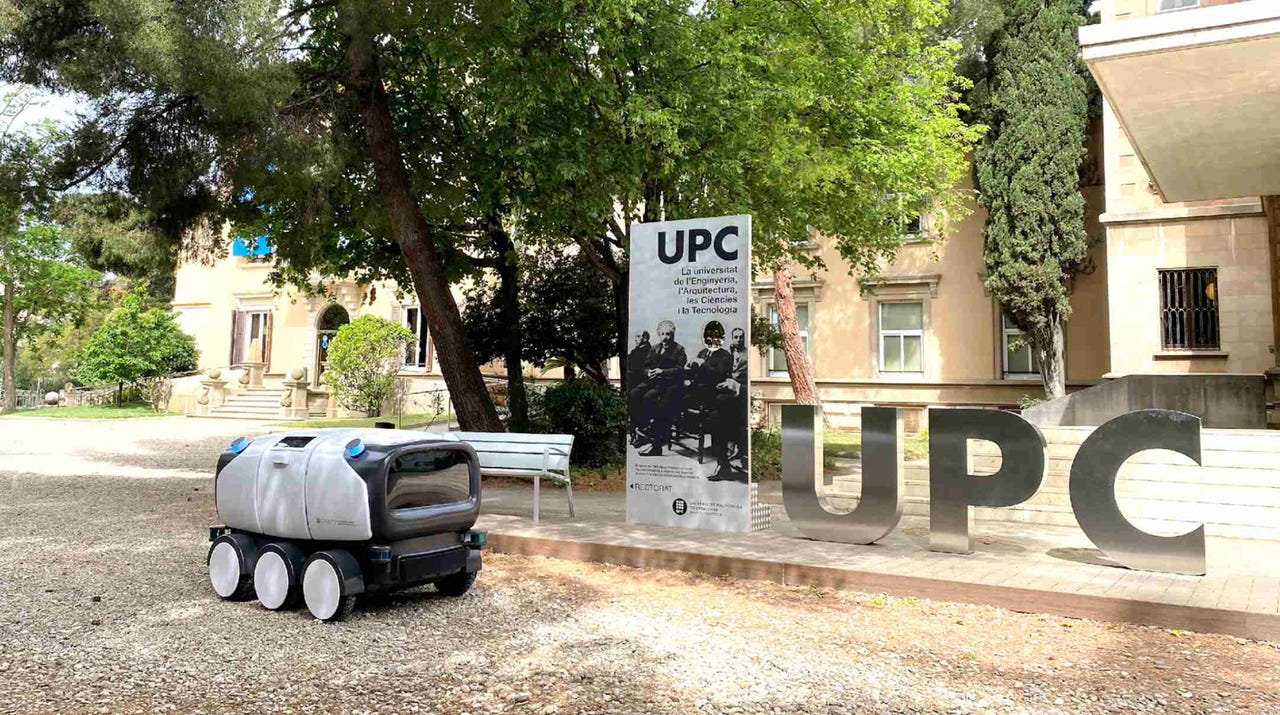































 Image: UPC
Image: UPC In the urban logistics field, autonomous robots are finding their feet -or rather, their wheels.
This development makes sense: the COVID-19 crisis has boosted online sales and multiplied the number of vehicles delivering things. Our "I want it all and I want it now" behavior has worsened congestion in city streets, air quality, noise pollution, use of public land, and hastened the deterioration of sidewalks.
Of course, retail companies are also interested in finding innovative solutions to these challenges, as the last mile represents up to 40% of total transport costs. With global e-commerce sales jumping to$26.7 trillion last year and global spending on last-mile delivery set to reach$62.7 Bn by 2027, the opportunities for new advances are ripe.
In Barcelona, the Polytechnical University of Catalonia (UPC) recently tested its Autonomous Delivery Device (ADD), which has been designed, manufactured, and piloted in Catalonia. The six-wheel vehicle can carry a payload up to 100kg and has a range of 80 km -or around five hours of drive time.
The ADD is equipped with LIDAR sensors and a communications system that allows the robot to stay in touch with whoever's cargo it's carrying. So, if you were to order a pizza from a local ristorante, the ADD would send the hungry recipient a notification to confirm the order, along with a code, which can be used to access the vehicle and its tasty contents when it arrives -hopefully still hot.
SEE:How to talk about tech: Five ways to get people interested in your new project
Test runs of ADD have been a success. The vehicle has proven itself capable of getting from A to B in one piece and can quite comfortably navigate sidewalks up to 20cm (7.87 inches) tall and re-route itself, all while avoiding potential hazards and obstacles.
But test environments are not representative of real-world conditions. Laia Pag
 Tags chauds:
Intelligence artificielle
Innovation et Innovation
Tags chauds:
Intelligence artificielle
Innovation et Innovation